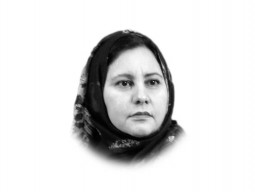
The world changes all the time. Change occurs not only because the economies grow and their structures change. Populations also increase but at very different rates across the world. For the first time in human history, several large countries have seen dramatic declines in human fertility. Russia and several countries in Western Europe have begun to see perceptible declines in the rates of growth of their populations. These declines have meant their populations have begun to age. This is also occurring in China which several decades ago instituted a ‘one child’ policy. The state would not allow couples to have more than on child and it had the means to enforce the policy. Policymakers operating out of Beijing were then nervous that they were running out of space and resources to accommodate more than a billion and a half people, the point towards which it seemed they were heading. The population accepted the state diktat and stopped having multiple children. The rate of growth declined.
The policymakers then did not foresee the negative consequences of rapid population decline. China now has reached the situation at which economic dynamism is threatened for reasons of population decline. A young population is needed to keep the economy and society vibrant and dynamic.
This demographic change is not occurring all over the globe. Pakistan, now the fifth largest country in the world, has a population of between 210 million and 220 million and is growing at the rate of 2.2 to 2.3 per cent a year. It is already seven to eight times the population at the time of independence 75 years ago. If the rate does not decline, the population will reach 500 million by the middle of this century. Several African countries have the same kind of demographic situation. Because of high growth rates they have very young populations. With a median age of 24 years which means that one-half of the population is below that age, Pakistan has one of the world’s youngest populations.
These demographic differences between the countries that are predominantly white and those that are coloured raise an obvious question: would the world’s white countries allow young people of colour to go to them to keep their populations relatively young? It is quite extraordinary that the answer was yes when more than a million asylum seekers knocked at Germany’s doors, escaping the wars in the Middle East and Afghanistan. Angela Merkel then was the Chancellor and she had no hesitation in bringing people of colour and following a different faith into her country. It is the same country that went to a bloody war under the Nazis and Adolf Hitler to demonstrate that the Germans were a superior race and were bent upon clearing the country of all non-Germans, in particular the Jews and the Gypsies. Gas chambers were constructed to execute six million non-Germans. This time around, Chancellor Merkel spread the welcoming mat. Germany benefitted from this move. According to the research done by the Organization of Economic Cooperation and Development, the OECD, absorption of more than a million people increased the German rate of GDP growth by 0.2 per cent in the year after the arrival of the refugees. Over the medium term, the rate of increase is likely to touch 0.3 per cent a year. The same may happen with the arrival of displaced people from Ukraine. Like the Syrians, Iraqis and Afghans who made up the first wave of migration to Western Europe, the Ukrainians are also young and educated. They would no doubt contribute to the economic progress in all the countries prepared to receive and accommodate them.
Excluding the Ukrainians, most of the tides of newcomers to Western Europe and North America are people of colour. They are leaving their homes in the Middle East, Africa and parts of Asia to find economic opportunities not available at home. If allowed, as was the case in Merkel’s Germany, they would help both sets of countries — those who send them and those who receive them. An important consequence of this would be that the ‘white lands’ of Europe and North America would become noticeably more coloured and less Christian. It is inevitable that there will be a reaction to these developments. It had happened during the presidency of Donald Trump (2017-2021) when he openly spoke against letting Muslims into his county and showed a clear preference of migrants from white Norway than from black Haiti.
There are similar reactions in several West European countries. In the April election for the French presidency, migration has become a major issue. All major candidates are against immigration, especially if the source of those coming in is the Muslim world. Viktor Orban, the repeatedly elected prime minister of Hungary, has promised to keep his country white and Christian. Would other leaders in the white world follow the likes of Orban?
They could but there will be a high price associated with these policies. At least three things would happen if this approach is followed with diligence. One, the countries that are determined to protect their colour and religion will see significant slides in their economic performance. Two, they will not be able continue to pursue liberalism as the preferred philosophy of governance. And three, they will not be able to prevent the rapidly rising China from swamping them. This is not to say that the Chinese don’t have their own religious and racial prejudices. In building their nation, they have shown a strong preference for the values and cultural preferences of the Hans that make up 90 per cent of the country’s population.
I will end this article with some numbers. According to one study, the people of colour (racial, ethnic and religious minorities) make up approximately 10 per cent of the population of the European Union. They have a much larger presence in the United States. As of 2020, white Americans are still the racial majority but that won’t be the case for very long. The white represent 57.8 per cent of the country’s population. There is considerable ethnic dispersal among the American people. About 55 per cent of the African-American population lives in the South. A plurality or majority of the non-white ethnic groups reside in the West. This region is home to 42 per cent of Hispanics and Latin Americans, 46 per cent of Asian Americans, 98 per cent of American Indians and Alaskan natives. The country’s mid-West is mostly white and that is where anti-immigration sentiment is raising rapidly. This region made up Donald Trump’s base.
After the black and Latin American populations, the third significant minority is the Asian-American population comprising 24 million or 7 per cent of the country’s population. At this time, the self-identified Asian-American subgroups are Chinese-Americans, Filipino-Americans, Indian-Americans, Vietnamese-Americans, Korean-Americans, Japanese-Americans, Taiwanese-Americans, and Pakistani-Americans. The estimates for the number of people of Pakistani origin, including those who were born of one or two Pakistani parents, range from 500,000 to 700,000.
One indication that the proportion of the white in the American population has begun to decline is that in the year 2020 more babies were born to non-white parents than to those that are white. The proportion of white is declining as is the number of people who identify themselves as Christians.
Published in The Express Tribune, April 25th, 2022.
Like Opinion & Editorial on Facebook, follow @ETOpEd on Twitter to receive all updates on all our daily pieces.



1719211536-0/BeFunky-collage-(81)1719211536-0-165x106.webp)





1729685382-0/Untitled-design-(57)1729685382-0-270x192.webp)











COMMENTS
Comments are moderated and generally will be posted if they are on-topic and not abusive.
For more information, please see our Comments FAQ